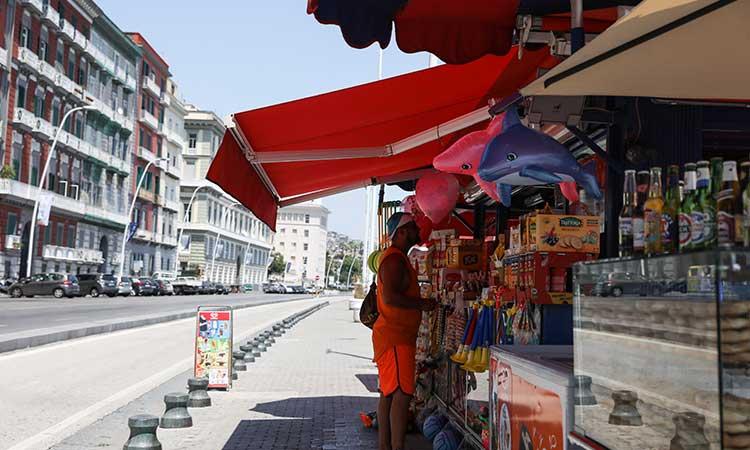Temperatures have reached near all-time highs in Italy and Spain with even higher temperatures predicted in the coming days.
The latest heatwave -- the third in Europe this summer -- comes as the continent is hosting a record number of tourists, the first record-setting summer of tourism since 2019, Xinhua news agency reported.
Temperatures of above 48 degrees Celsius were provisionally recorded Sunday on the Italian island of Sardinia, in the southern Italian region of Apulia, and in La Palma, Spain.
The all-time record for temperature in Europe is 48.8 degrees Celsius, set in 2021 in Sicily. An official from the European Space Agency (ESA) told Xinhua that high temperatures across Europe could approach or surpass that level any time in recent days.
In Italy, 16 cities including Rome and Florence were under red alert, meaning temperatures during the hottest part of the day could threaten the health of even young and healthy individuals if precautions are not taken. The weather site Il Meteo said temperatures could threaten all-time records through at least Thursday when the heat in many parts of the country is likely to be reduced by rain.
Temperatures in Rome are predicted to reach 43 degrees Celsius on Monday and Tuesday, a record for the Italian capital.
In Spain, the temperatures were worsened by wildfires that drove 4,000 people from their homes in La Palma on the Canary Islands.
The ESA said earlier this week that temperatures could approach national records across Europe in the coming days, including in Italy, Spain, Greece, France, Germany, Portugal, and Poland.
In addition to the impacts of climate change, temperatures are being pushed higher by African weather currents moving north across the Mediterranean Sea, localized factors like the wildfires in Spain, and global events like the El Nino weather phenomena in the Pacific Ocean.
The hot weather pattern in the Mediterranean prevents cooler weather systems from moving into the area, Mattia Gussoni from Il Meteo said in a television interview.
Officials and experts have warned people in areas most affected by the intense heat to stay indoors unless necessary, to stay in the shade while outdoors, to stay hydrated, and to eat lighter meals.
Also read | El Nino: US, Europe face significant heatwave, Asia under floods
Also read | Biden on Europe visit amid questions over NATO unity, munition to Ukraine


















